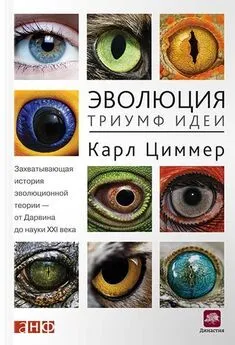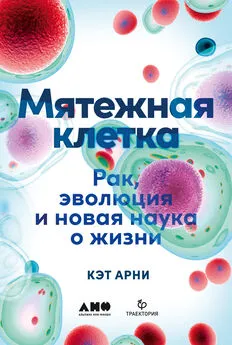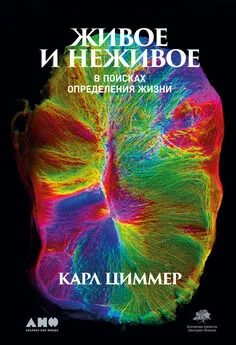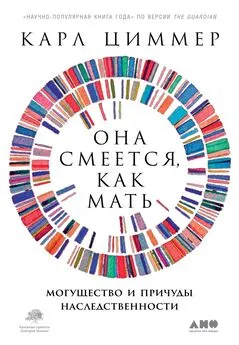Карл Циммер - Микрокосм. E. coli и новая наука о жизни
- Название:Микрокосм. E. coli и новая наука о жизни
- Автор:
- Жанр:
- Издательство:Альпина нон-фикшн
- Год:2013
- Город:Москва
- ISBN:978-5-91671-269-8, 978-0-30-27686-5;
- Рейтинг:
- Избранное:Добавить в избранное
-
Отзывы:
-
Ваша оценка:
Карл Циммер - Микрокосм. E. coli и новая наука о жизни краткое содержание
E. coli —
Интересно, что
— общественный микроб. Автор проводит удивительные и тревожные параллели между жизнью
и нашей собственной жизнью. Он показывает, как этот микроорганизм меняется практически на глазах исследователей, раскрывая перед их изумленным взором миллиарды лет эволюции, закодированные в его геноме.
Издание подготовлено при поддержке Фонда Дмитрия Зимина «Династия»
Династия
Фонд некоммерческих программ «Династия» основан в 2001 г. Дмитрием Борисовичем Зиминым, почетным президентом компании «Вымпелком». Приоритетные направления деятельности Фонда — поддержка фундаментальной науки и образования в России, популяризация науки и просвещение. В рамках программы по популяризации науки Фондом запущено несколько проектов. В их числе — сайт elementy.ru, ставший одним из ведущих в русскоязычном Интернете тематических ресурсов, а также проект «Библиотека «Династии» — издание современных научно — популярных книг, тщательно отобранных экспертами — учеными. Книга, которую вы держите в руках, выпущена в рамках этого проекта.
Микрокосм. E. coli и новая наука о жизни - читать онлайн бесплатно ознакомительный отрывок
Интервал:
Закладка:
Sandermann, H. 2006. Plant biotechnology: Ecological case studies on herbicide resistance. Trends Plant Sei 11 (7):324-28.
Sansonetti, P. J. 2006. Shigellosis: An old disease in new clothes? PLoSMed 3(9):e354.
Sapp, J. 1994. Evolution by association: A history of symbiosis. New York: Oxford University Press.
2005. The prokaryote‑eukaryote dichotomy: Meanings and
mythology.
Microbiol Mol Biol Rev 69 (2):292–305.
Sauer, U. 2006. Metabolic networks in motion: 13C‑based flux analysis. Mol SystBiol 2:62.
Sauer, U., M. Heinemann, and N. Zamboni. 2007. Genetics: Getting closer to the whole picture. Science 316 (5824):550-51.
Schaechter, Moselio, John L. Ingraham, and Frederick C. Neidhardt.
2006. Microbe. Washington, D. C.: ASM Press.
Schnapp, N., and Q. Schiermeier. 2001. Critics claim “sight‑saving” rice is over‑rated. Nature 410 (6828):503.
Schneider, D., and R. E. Lenski. 2004. Dynamics of insertion sequence elements during experimental evolution of bacteria. Res Microbiol 155 (5):319-27.
Scott, С. T. 2006. Chimeras in the crosshairs. Nat Biotechnol 24
(5):487—90.
Segerstrale, Ullica. In press. Nature’s oracle: A life ofW. D. Hamilton. Oxford: Oxford University Press.
Service, Robert F. 2003. Researchers create first autonomous synthetic life form. Science
299 (5607):640.
2007. A growing threat down on the farm. Science 316
(5828):1114—17.
Shaikh, N., and P. I. Tarr. 2003. Escherichia eoli 0157: H7 Shiga toxin — encoding bacteriophages: Integrations, excisions, truncations, and evolutionary implications. JBacteriol 185 (12):3596—605.
Shapiro, J., L. Machattie, L. Eron, G. Ihler, K. Ippen, and J. Beckwith. 1969. Isolation of pure lac operon DNA. Nature 224 (5221):768-74.
Shi, W., and D. R. Zusman. 1993. Fatal attraction. Nature 366 (6454):414-15.
Shin, T., D. Kraemer, J. Pryor, L. Liu, J. Rugila, L. Howe, S. Buck, K. Murphy, L. Lyons, and M. Westhusin. 2002. A cat cloned by nuclear transplantation. Nature 415 (6874):859. Shnayerson, Michael, and Mark J. Plotkin. 2002. The killers within: The deadly rise of drug — resistant bacteria. Boston: Little, Brown.
Silver, Lee M. 2006. Challenging nature: The clash of science and spirituality at the fron —
tiers of life. New York: Ecco.
Sinervo, B. 2001. Runaway social games, genetic cycles driven by alternative male and female strategies, and the origin of morphs. Genetica 112-13:417-34.
Singer, M. 2001. What did the Asilomar exercise accomplish, what did it leave undone? PerspectBiol Med 44 (2):186-91.
Spencer, C. C., M. Bertrand, M. Travisano, and M. Doebeli.
2007. Adaptive diversifica- tion in genes that regulate resource use in Escherichia eoli. PLoS Genet 3 (l):el5. Spudich, J. L., and
D. E. Koshland Jr. 1976. Non‑genetic individuality: Chance in the single cell. Nature 262 (5568):467-71.
Stahl, Franklin W. 2001. Alfred Day Hershey. Biographical Memoirs 80. Washington, D. C.: National Academy Press.
Stein, A. J., H. P. Sachdev, and M. Qaim. 2006. Potential impact and cost‑effectiveness of Golden Rice. Nat Biotechnol 24 (10):1200–1201.
Stenuit, B., L. Eyers, R. Rozenberg, J. L. Habib‑Jiwan, and S. N. Agathos. 2006. Aerobic growth of Escherichia eoli with 2,4,6–trinitrotoluene (TNT) as the sole nitrogen source and evidence of TNT denitration by whole cells and cell‑free extracts. Appl Environ Microbiol 72 (12):7945-48.
Stewart, E. J., R. Madden, G. Paul, and F. Taddei. 2005. Aging and death in an organism that reproduces by morphologically symmetric division. PLoS Biol 3 (2):e45.
Sullivan, Woodruff T., and John Baross, eds. 2007. Planets and life: The emerging science of astrobiology. New York: Cambridge University Press.
Talbot, M. 2005. Darwin in the dock. New Yorker, December 5,2005.
TalkOrigins Archive. 2006. Kitzmiller v. Dover Area School District, Dover, Pennsylvania
Intelligent Design Case, http://talkorigins.org/faqs/dover/kitzmiller jv dover. html. Tanaka, R., M. Csete, and J. Doyle. 2005. Highly optimised global organisation of metabolic networks. Syst Biol (Stevenage) 152 (4):179-84.
Tarr, P. I., C. A. Gordon, and W. L. Chandler. 2005. Shiga‑toxin- producing Escherichia coli and haemolytic uraemic syndrome. Lancet 365 (9464):1073-86.
Tatum, E. L., and J. Lederberg. 1947. Gene recombination in the bacterium Escherichia coli. JBacteriol 53 (6):673-84.
Tenaillon, О., E. Denamur, and I. Matic. 2004. Evolutionary significance of stress- induced mutagenesis in bacteria. Trends Microbiol 12 (6):264-70.
Tenover, F. C. 2006. Mechanisms of antimicrobial resistance in bacteria. Am JMed 119 (6 Suppl. 1):S3-10, discussion S62-70.
Thanbichler, M., and L. Shapiro. 2006. Chromosome organization and segregation in bacteria./ Struct Biol 156 (2):292–303.
Thiem, S., D. Kentner, and V. Sourjik. 2007. Positioning of chemosensory clusters in E. coli and its relation to cell division. Embo /26 (6):1615—23.
Thomas, W. E., L. M. Nilsson, M. Forero, E. V. Sokurenko, and V. Vogel. 2004. Shear- dependent “stick‑and‑roll” adhesion of type 1 fimbriated Escherichia coli. Mol Microbiol 53 (5):1545-57.
Thornton, I. W. B. 1996. Krakatau: The destruction and reassembly of an island ecosystem. Cambridge, Mass.: Harvard University Press.
Tomitani, A., A. H. Knoll, C. M. Cavanaugh, and T. Ohno. 2006. The evolutionary diversification of cyanobacteria: Molecular- phylogenetic and paleontological per- spectives. Proc Natl Acad Sei USA 103 (14):5442-47.
Travisano, М., J. A. Mongold, A. F. Bennett, and R. E. Lenski. 1995. Experimental tests of the roles of adaptation, chance, and history in evolution. Science 267 (5194):87–90.
Trinh, C. T., R. Carlson, A. Wlaschin, and F. Srienc. 2006. Design, construction and performance of the most efficient biomass- producing E. eoli bacterium. Metab Eng 8 (6):628—38.
U. S. Congress. Senate. 2005. Human Chimera Prohibition Act of 2005. S 659.109th Cong., 1st sess.
U. S. Department of Health and Human Services, Centers for Disease Control and Pre- vention. 2006. Multi‑state outbreak of
E. eoli 0157: H7 infections from spinach. September — October. http://www.cdc.gov/ecoli2006/September/.
Van Till, Howard J. 2002. E. eoli at the No Free Lunchroom: Bacterial flagella and Dembski’s case for intelligent design. American Association for the Advancement of Science. http://www.aaas.org/spp/dser/03_Areas/evolution/perspectives/ vantillecoli_2002.pdf.
Varma, J. K., K. D. Greene, M. E. Relier, S. M. DeLong, J. Trottier, S. F. Nowicki, M. DiOrio, E. M. Koch, T. L. Bannerman, S. T. York, M. A. Lambert‑Fair, J. G. Wells, and P. S. Mead. 2003. An outbreak of Escherichia eoli 0157 infection following expo- sure to a contaminated building./АМА 290 (20):2709-12.
Vulic', M., and R. Kolter. 2001. Evolutionary cheating in Escherichia eoli stationary phase cultures. Genetics 158 (2):519-26.
Wade, Nicholas. 1977. The ultimate experiment: Man‑made evolution. New York: Walker.
Walters, M., and V. Sperandio. 2006. Quorum sensing in Escherichia eoli and Salmonella. Int J Med Microbiol 296 (2–3):125—31.
Wandersman, C., and P. Delepelaire. 2004. Bacterial iron sources: From siderophores to hemophores. Annu Rev Microbiol 58:611-47.
Wang, L., J. Xie, and P. G. Schultz. 2006. Expanding the genetic code. Annu Rev Biophys Biomol Struct 35:225-49.
Warmflash, D., and B. Weiss. 2005. Did life come from another world? Sei Am 293(5):64–71.
Watanabe, T. 1963. Infective heredity of multiple drug resistance in bacteria. BacteriolRev 27:87-115.
Watson, James D. 1969. The double helix: A personal account of the discovery of the structure of DNA. New York: New American Library.
Watson, James D., and John Tooze. 1981. The DNA story: A documentary history of genecloning. San Francisco: W. H. Freeman.
Welch, R. A., V. Burland, G. Plunkett III, P. Redford, P. Roesch,
D. Rasko, E. L. Buckles, S. R. Liou, A. Boutin, J. Hackett, D. Stroud,
G. F. Mayhew, D. J. Rose, S. Zhou, D. C. Schwartz, N. T. Perna, H. L. Mobley, M. S. Donnenberg, and F. R. Blattner. 2002. Extensive mosaic structure revealed by the complete genome sequence of uropath- ogenic Escherichia coli. Proc Natl Acad Sei USA 99 (26):17020-24.
Wells, H. G. 1896. The island of Dr. Moreau. Garden City, N. Y.: Garden City Publishing.
West, S. A., A. S. Griffin, A. Gardner, and S. P. Diggle. 2006. Social evolution theory for microorganisms. Nat Rev Microbiol 4 (8):597–607.
White‑Ziegler, C. A., A. J. Malhowski, and S. Young. 2007. Human body temperature (37 C) increases the expression of iron, carbohydrate, and amino acid utilization genes in Escherichia coli K-12 .JBacteriol 189:5429-40.
Wick, L. M., W. Qi, D. W. Lacher, and T. S. Whittam. 2005. Evolution of genomic content in the stepwise emergence of Escherichia coli 0157: W. JBacteriol 187 (5):1783-91.
Willenbrock, H., and D. W. Ussery. 2004. Chromatin architecture and gene expression in Escherichia coli. Genome Biol 5 (12):252.
Williams, G. C. 1966. Adaptation and natural selection. Princeton: Princeton University Press.
1999. The 1999 Crafoord Prize lectures. The Tithonus error
in modern geron- tology. Q Rev Biol 74 (4):405-15.
Wirth, T., D. Falush, R. Lan, F. Colles, P. Mensa, L. H. Wieler, H. Karch, P. R. Reeves, M. C. Maiden, H. Ochman, and M. Achtman. 2006. Sex and virulence in Escherichia coli: An evolutionary perspective. Mol Microbiol 60 (5):1136—51.
Wise, R., and E. J. Soulsby. 2002. Antibiotic resistance — an evolving problem. Vet Ree 151 (13):371-72.
Woese, C. R., and G. E. Fox. 1977. Phylogenetic structure of the prokaryotic domain: The primary kingdoms. Proc Natl Acad Sei USA 74 (11):5088—90.
Woldringh, C. L., and N. Nanninga. 2006. Structural and physical aspects of bacterial chromosome segregation. J Struct Biol 156
(2):273-83.
Wolf, D. M., V. V. Vazirani, and A. P. Arkin. 2005. Diversity in times of adversity: Prob- abilistic strategies in microbial survival games./ Theor Biol 234 (2):227-53.
Wolfe, A. J. 2005. The acetate switch. Microbiol Mol Biol Rev 69 (1):12–50.
Woods, R., D. Schneider, C. L. Winkworth, M. A. Riley, and R. E. Lenski. 2006. Tests of parallel molecular evolution in a longterm experiment with Escherichia eoli. Proc Natl Acad Sei USA 103 (24):9107—12.
Wright, Susan. 1994. Molecular politics: Developing American and British regulatory pol- icy for genetic engineering, 1972–1982. Chicago: University of Chicago Press.
Xavier, J. B., and K. R. Foster. 2007. Cooperation and conflict in microbial biofilms. Proc Natl Acad Sei USA 104 (3):876-81.
Zelaya, Ian A., Michael D. K. Owen, and Mark J. VanGessel. 2007. Transfer of gly- phosate resistance: Evidence of hybridization in Conyza (Asteraceae). Am fBot94 (4):660-73.
Zhang, W., W. Qi, T. J. Albert, A. S. Motiwala, D. Alland, E. K. Hyytia- Trees, E. M. Ribot, P. I. Fields, T. S. Whittam, and B. Swaminathan. 2006. Probing genomic diversity and evolution of Escherichia eoli 0157 by single nucleotide polymorphisms. Genome Res 16 (6):757-67.
Читать дальшеИнтервал:
Закладка:
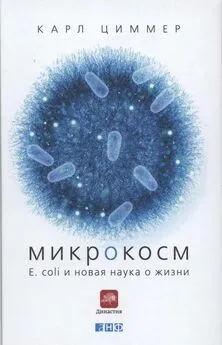

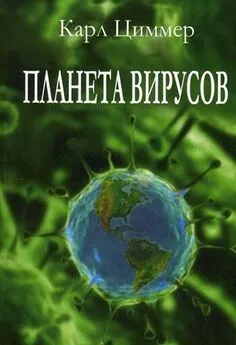
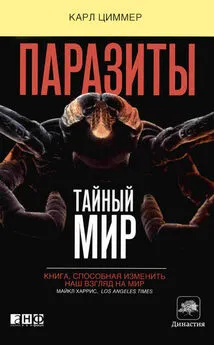

![Карл Циммер - Паразит – царь природы [Тайный мир самых опасных существ на Земле] [litres]](/books/1067054/karl-cimmer-parazit-car-prirody-tajnyj-mir-sam.webp)
![Карл Циммер - Она смеется, как мать [Могущество и причуды наследственности] [litres]](/books/1075049/karl-cimmer-ona-smeetsya-kak-mat-moguchestvo-i-pr.webp)
